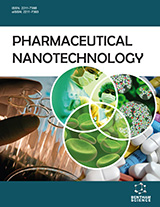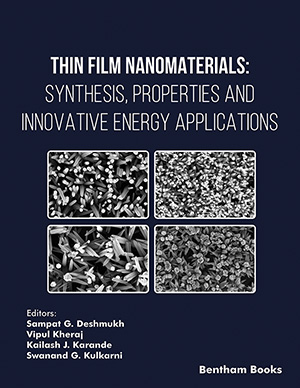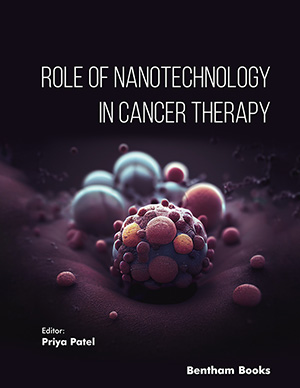
Abstract
Nanotechnology is a multidisciplinary scientific field with roots in medicine, communications, genomics, and robotics. Miniaturization provides cost effective and more rapidly functioning mechanical, chemical and biological components. But nanometer sized objects also possess self-ordering and assembly behaviors quite different from larger macro objects that when understood and harnessed will dramatically enhance the quality of human life. The potential applications of nanotechnology encompass virtually every aspect of our lives but one of the greatest values of nanotechnology will be the development of new and effective medical treatments (i.e. nanomedicine). This review focuses on the potential of nanomedicine including using nanoparticles for diagnostic and screening purposes, viral detection, developing artificial receptors, DNA sequencing using nanopores, manufacture of unique drug delivery systems, gene therapy applications, and the enablement of tissue engineering.
Keywords: drug delivery, gene therapy, tissue engineering, encapsulation, nanotechnology
Current Nanoscience
Title: Nanomedicine
Volume: 1 Issue: 3
Author(s): Dwaine F. Emerich and Christopher G. Thanos
Affiliation:
Keywords: drug delivery, gene therapy, tissue engineering, encapsulation, nanotechnology
Abstract: Nanotechnology is a multidisciplinary scientific field with roots in medicine, communications, genomics, and robotics. Miniaturization provides cost effective and more rapidly functioning mechanical, chemical and biological components. But nanometer sized objects also possess self-ordering and assembly behaviors quite different from larger macro objects that when understood and harnessed will dramatically enhance the quality of human life. The potential applications of nanotechnology encompass virtually every aspect of our lives but one of the greatest values of nanotechnology will be the development of new and effective medical treatments (i.e. nanomedicine). This review focuses on the potential of nanomedicine including using nanoparticles for diagnostic and screening purposes, viral detection, developing artificial receptors, DNA sequencing using nanopores, manufacture of unique drug delivery systems, gene therapy applications, and the enablement of tissue engineering.
Export Options
About this article
Cite this article as:
Emerich F. Dwaine and Thanos G. Christopher, Nanomedicine, Current Nanoscience 2005; 1 (3) . https://dx.doi.org/10.2174/157341305774642911
| DOI https://dx.doi.org/10.2174/157341305774642911 |
Print ISSN 1573-4137 |
| Publisher Name Bentham Science Publisher |
Online ISSN 1875-6786 |
Call for Papers in Thematic Issues
Advanced Inorganic Nanocomposites and their Emerging Applications
This special issue will highlight developments in the recent trends in the synthesis of metal oxides, nanoclusters, biomaterials, 2D nanomaterials, nanocrystals, nanocomposites, etc., and their applications in electrochemical systems, tissue regeneration, energy storage and harvesting, sensors, etc. The novelty of the methods in the chemical synthesis, as well as their ...read more
Advanced Nanotechnology in Forensic Science: Revolutionizing Fingerprint Identification and Crime Scene Analysis
This special issue aims to provide a comprehensive exploration of the innovative fusion between nanotechnology and forensic science. It aspires to bridge the gap between traditional investigative techniques and cutting-edge nanoscale applications, envisioning a paradigm shift in forensic analysis. By compiling the expertise of multidisciplinary experts, the book's objectives include ...read more
Graphene and 2D Materials for Energy Storage and Conversion.
This thematic issue will discuss the recent advances in graphene-based nanomaterials for different energy technologies. Graphene possesses a high surface area, and stable structure and exhibits many interesting electronic, optical, and mechanical properties due to its 2D crystal structure. Graphene is of both fundamental interest and suitable for a wide ...read more
Nanopathology; A Promising Approach for Targeted Cancer Treatment
Cancer is the most challenging diseases in treatment worldwide. Recently, the nanotechnology opened the gate for targeting the cancer as a promising therapy. The small size and exceptional properties of nanoparticles give it several advantages for easily targeting of cancerous cells. Furthermore, this advantage allows them to easily penetrate deeply ...read more
Related Journals
 2
2
- Author Guidelines
- Graphical Abstracts
- Fabricating and Stating False Information
- Research Misconduct
- Post Publication Discussions and Corrections
- Publishing Ethics and Rectitude
- Increase Visibility of Your Article
- Archiving Policies
- Peer Review Workflow
- Order Your Article Before Print
- Promote Your Article
- Manuscript Transfer Facility
- Editorial Policies
- Allegations from Whistleblowers
Related Articles
-
Stimuli-Responsive Nanocarriers for Drug Delivery to the Central Nervous System
Current Nanoscience Oxidative Stress and Mitochondrial Dysfunction in Type 2 Diabetes
Current Pharmaceutical Design Denouement of Chemicals on Amyotrophic Lateral Sclerosis: Is Green Chemistry the Answer
Medicinal Chemistry The Co-Metabolism within the Gut-Brain Metabolic Interaction: Potential Targets for Drug Treatment and Design
CNS & Neurological Disorders - Drug Targets RNA Interference: New Therapeutics in Allergic Diseases
Current Gene Therapy Interactions of VDAC with Proteins Involved in Neurodegenerative Aggregation: An Opportunity for Advancement on Therapeutic Molecules
Current Medicinal Chemistry Extrasynaptic GABA<sub>A</sub> Receptors in the Brainstem and Spinal Cord: Structure and Function
Current Pharmaceutical Design Neurodegeneration in the Brain Tumor Microenvironment: Glutamate in the Limelight
Current Neuropharmacology Genetics and Therapies for GM2 Gangliosidosis
Current Gene Therapy Editorial [Hot topic: Role of Inflammation in Neurological and Psychiatric Disorders (Guest Editor: Mohtashem Samsam)]
Anti-Inflammatory & Anti-Allergy Agents in Medicinal Chemistry Tuning and Fine-Tuning of Synapses with Adenosine
Current Neuropharmacology Remodeling Chromatin and Stress Resistance in the Central Nervous System: Histone Deacetylase Inhibitors as Novel and Broadly Effective Neuroprotective Agents
Current Drug Targets - CNS & Neurological Disorders The Involvement of Post-Translational Modifications in Alzheimer's Disease
Current Alzheimer Research Biocomputational Resources Useful For Drug Discovery Against Compartmentalized Targets
Current Pharmaceutical Design Biomarker Discovery and Translation in Metabolomics
Current Metabolomics Drug Repositioning: A Unique Approach to Refurbish Drug Discovery
Current Drug Discovery Technologies RNAi Applications in Therapy Development for Neurodegenerative Disease
Current Pharmaceutical Design Myostatin in the Pathophysiology of Skeletal Muscle
Current Genomics Biology and Therapeutic Applications of Peroxisome Proliferator- Activated Receptors
Current Topics in Medicinal Chemistry Amyloid Beta Peptide, 4-Hydroxynonenal and Apoptosis
Current Alzheimer Research






















